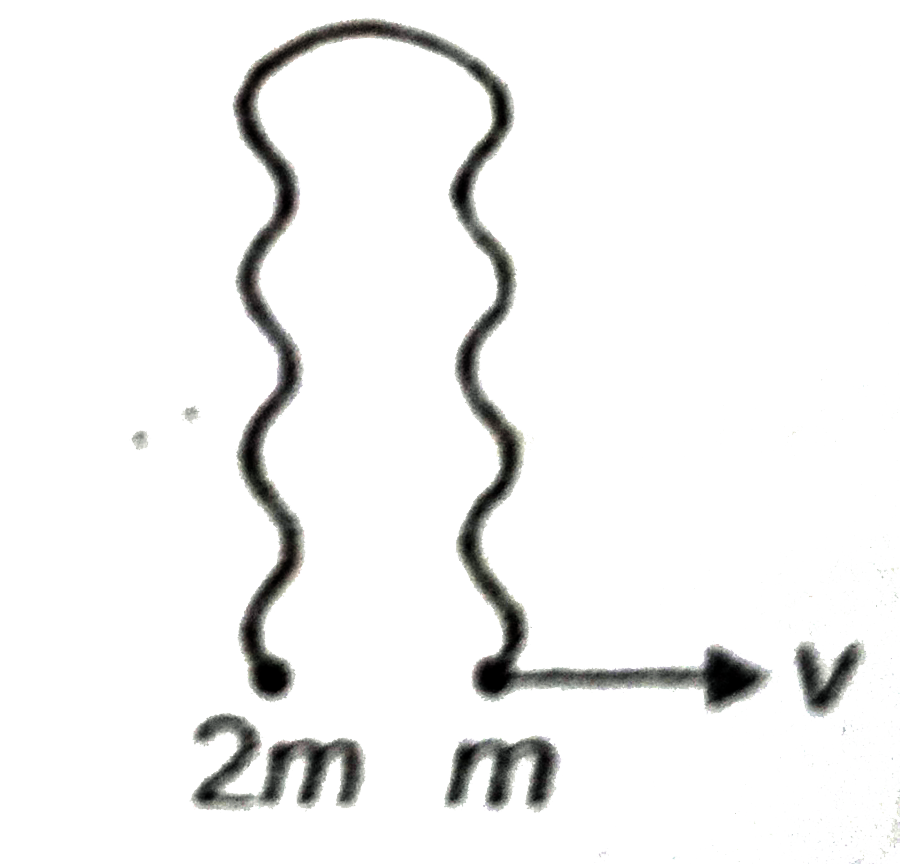Find the speed at which the mass of an electron is double of its rest mass.
To find the speed at which the mass of an electron is double its rest mass, we can follow these steps:
Step 1: Understand the relationship between relativistic mass and rest mass
The relativistic mass m of an object moving at speed v is given by the equation:
m=m0√1−v2c2
where:
- m0 is the rest mass,
- v is the speed of the object,
- c is the speed of light.
Step 2: Set up the equation for double the rest mass
We want to find the speed v at which the mass m is double the rest mass m0. Therefore, we set:
m=2m0
Step 3: Substitute into the mass equation
Substituting m=2m0 into the relativistic mass equation gives:
2m0=m0√1−v2c2
Step 4: Simplify the equation
We can cancel m0 from both sides (assuming m0≠0):
2=1√1−v2c2
Step 5: Rearrange the equation
Taking the reciprocal of both sides gives:
√1−v2c2=12
Step 6: Square both sides
Squaring both sides results in:
1−v2c2=14
Step 7: Solve for v2
Rearranging the equation gives:
v2c2=1−14=34
Step 8: Solve for v
Multiplying both sides by c2 yields:
v2=34c2
Taking the square root gives:
v=c√34=√32c
Step 9: Calculate the numerical value
Using c≈3×108 m/s:
v=√32×3×108≈2.59×108 m/s
Final Answer
Thus, the speed at which the mass of an electron is double its rest mass is approximately:
v≈2.59×108 m/s
---
The relativistic mass m of an object moving at speed v is given by the equation:
m=m0√1−v2c2
where:
- m0 is the rest mass,
- v is the speed of the object,
- c is the speed of light.
We want to find the speed v at which the mass m is double the rest mass m0. Therefore, we set:
m=2m0
Substituting m=2m0 into the relativistic mass equation gives:
2m0=m0√1−v2c2
We can cancel m0 from both sides (assuming m0≠0):
2=1√1−v2c2
Taking the reciprocal of both sides gives:
√1−v2c2=12
Squaring both sides results in:
1−v2c2=14
Rearranging the equation gives:
v2c2=1−14=34
Multiplying both sides by c2 yields:
v2=34c2
Taking the square root gives:
v=c√34=√32c
Using c≈3×108 m/s:
v=√32×3×108≈2.59×108 m/s
Thus, the speed at which the mass of an electron is double its rest mass is approximately:
v≈2.59×108 m/s
Topper's Solved these Questions
- THE SPECIAL THEORY OF RELATIVITYBOOK - HC VERMA ENGLISHCHAPTER - THE SPECIAL THEORY OF RELATIVITYEXERCISE - Objective
2 Videos
- THE SPECIAL THEORY OF RELATIVITYBOOK - HC VERMA ENGLISHCHAPTER - THE SPECIAL THEORY OF RELATIVITYEXERCISE - Objective 2
1 Video
- THE SPECIAL THEORY OF RELATIVITYBOOK - HC VERMA ENGLISHCHAPTER - THE SPECIAL THEORY OF RELATIVITYEXERCISE - Short answer
2 Videos
- THE NUCLEOUSBOOK - HC VERMA ENGLISHCHAPTER - THE NUCLEOUSEXERCISE - Short answer
12 Videos
- THERMAL AND CHEMICAL EFFECT OF ELECTRIC CURRENTBOOK - HC VERMA ENGLISHCHAPTER - THERMAL AND CHEMICAL EFFECT OF ELECTRIC CURRENTEXERCISE - Short Question
9 Videos
Similar Questions
Calculate the energy in MeV equivalent to the rest mass of an electron . Given that the rest mass of an electron , m=9.1×10−31kg, 1MeV=1.6×10−13J and speed of light , c=3×108ms−1.
View SolutionAn electron has a total energy of 2 MeV. Calculate the effective mass of the electron in kg and its speed. Assume rest mass of electron 0.511 MeV.
View Solution
Knowledge Check
The rest mass of the photon is
AhvcBhvc2ChvλDzero
Which of the following statement is (are) correct in reference to Bohr's model of hydrogen atom if the mass of an electron because 10 times its original mass ?
View SolutionDetermine the de Broglie wavelength of a proton, whose kinetice energy is equal to the rest of the mass energy of an electron. Given that the mass of an electron is 9×10−31 kg and the mass of a proton is 1837 times as that of the electron.
View SolutionIn a hypothetical atom, mass of electron is doubled, value
of atomic number is Z=4. Find wavelength of photon when this electron jumps
from 3rd excited state to 2nd orbit.
View SolutionWhat will be the escape speed from earth if the mass of earth is doubled keeping the same size ?
View SolutionA particle of mass m and positive charge q is projected with a speed of v0 in y–direction in the presence of electric and magnetic field are in x–direction. Find the instant of time at which the speed of particle becomes double the initial speed.
View SolutionA rigid rod of mass m & length l is pivoted at one of its ends. If it is released from its horizontal position, find the speed of the centre of mass of the rod when it becomes vertical.
View SolutionTwo particles of a mass 2m and m are tied with an inextensible string the particle of mass m is given a speed V as shown in the figure. Find the speed with which the particle of mass 2m starts moving.

View Solution